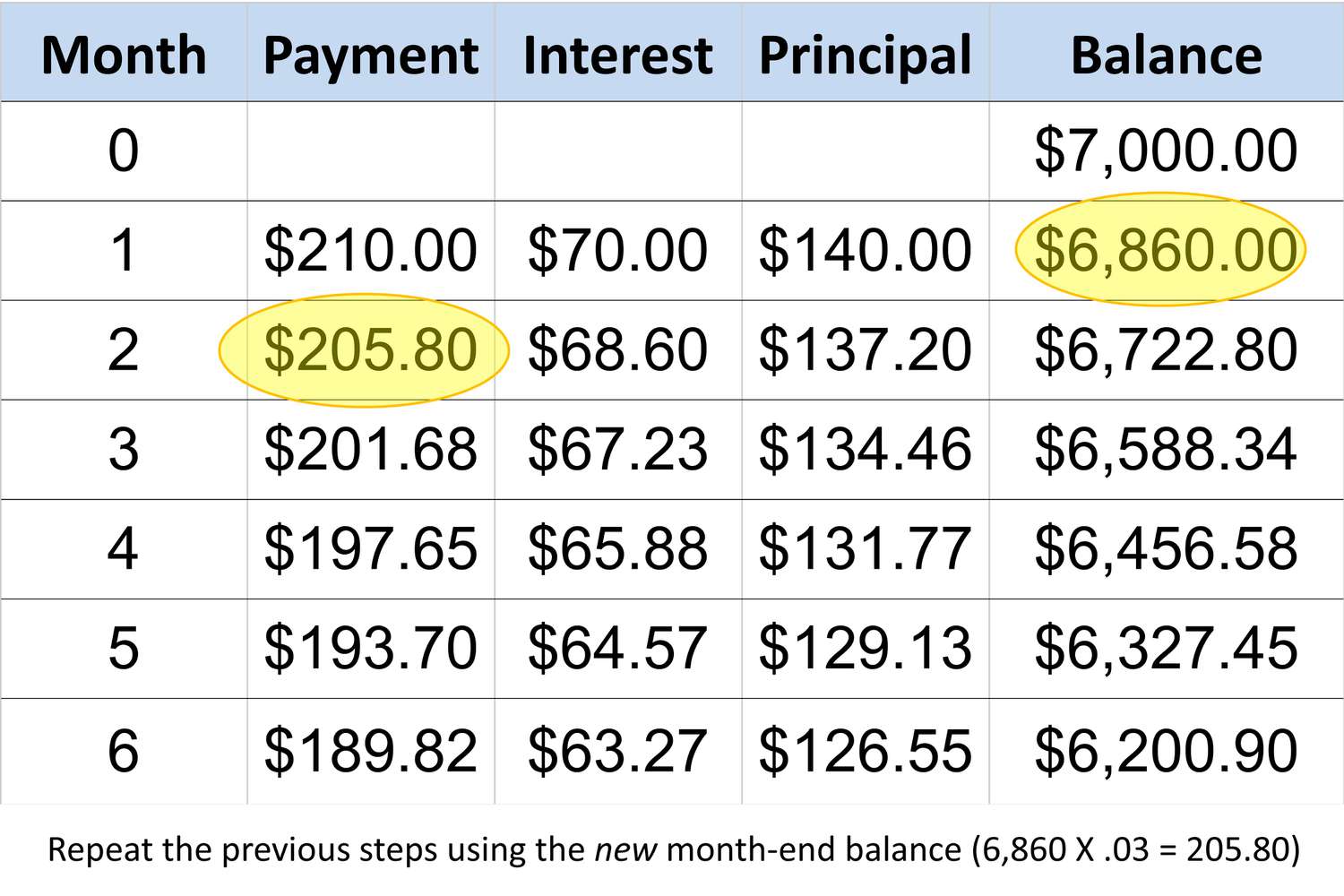Home>Finance>How Does JCPenney Calculate The Minimum Payment


Finance
How Does JCPenney Calculate The Minimum Payment
Published: February 26, 2024
Learn how JCPenney calculates minimum payments and manages finances. Understand the process and take control of your financial planning.
(Many of the links in this article redirect to a specific reviewed product. Your purchase of these products through affiliate links helps to generate commission for LiveWell, at no extra cost. Learn more)
Table of Contents
Introduction
Understanding how JCPenney calculates the minimum payment on credit card balances is crucial for responsible financial management. When customers receive their monthly credit card statements, they often come across the minimum payment requirement. This figure represents the lowest amount they must pay to keep their account in good standing. However, it's essential to comprehend how this minimum payment is determined, especially when dealing with a retail giant like JCPenney.
JCPenney, a renowned American department store chain, offers its customers the convenience of credit cards that can be used for purchases within their stores and online. As with any credit card, JCPenney's cardholders are required to make monthly payments, which typically include a minimum amount. Understanding the factors that influence the calculation of this minimum payment is crucial for customers to manage their finances effectively and avoid unnecessary fees and interest charges.
In this article, we will delve into the specifics of how JCPenney calculates the minimum payment on its credit cards. By gaining insight into this process, customers can make informed decisions about managing their credit card balances and avoiding potential pitfalls associated with paying only the minimum amount due. Let's explore the intricacies of minimum payments and shed light on the factors that JCPenney considers when determining these essential financial obligations.
Understanding Minimum Payments
Minimum payments are the smallest amount that a credit card holder must pay each month to keep their account in good standing. It is important to note that paying only the minimum amount due can lead to long-term debt and substantial interest charges. Therefore, understanding the significance of minimum payments is crucial for responsible financial management.
When it comes to JCPenney credit cards, customers need to comprehend the implications of making only the minimum payment. By gaining a clear understanding of this concept, they can make informed decisions about managing their credit card balances effectively. It’s important to recognize that while the minimum payment may seem like a manageable obligation, it often leads to prolonged debt and increased interest costs if not addressed promptly.
Customers should be aware that credit card companies, including JCPenney, calculate minimum payments based on various factors, such as the outstanding balance, interest rates, and fees. This means that the minimum payment can fluctuate from month to month, depending on these variables. By understanding the dynamics of minimum payments, customers can take proactive steps to avoid accruing excessive interest and falling into a cycle of debt.
It is essential for JCPenney credit cardholders to grasp the implications of paying only the minimum amount due. While it may offer temporary relief, it can result in long-term financial strain. Therefore, gaining a comprehensive understanding of minimum payments is vital for making informed decisions about managing credit card balances responsibly.
Factors Considered by JCPenney in Calculating Minimum Payments
When JCPenney calculates the minimum payment on credit card balances, several key factors come into play. Understanding these factors is crucial for customers who seek to manage their credit card obligations effectively. By gaining insight into the elements that influence minimum payment calculations, cardholders can make informed decisions about their financial responsibilities.
One of the primary factors considered by JCPenney is the outstanding balance on the credit card. The minimum payment is often calculated as a percentage of this balance, typically ranging from 1% to 3% of the total amount owed. As the outstanding balance fluctuates, so does the minimum payment, reflecting the dynamic nature of credit card obligations.
Additionally, JCPenney takes into account the interest rate applied to the outstanding balance when determining the minimum payment. Higher interest rates lead to larger minimum payments, as the credit card company aims to ensure that a portion of the principal balance is being addressed each month. This factor underscores the importance of understanding the implications of interest rates on minimum payments and overall debt management.
Moreover, fees such as late payment charges and other penalties may also impact the calculation of minimum payments. If a customer incurs additional fees, these can contribute to an increase in the minimum payment for the following month. Therefore, it is essential for cardholders to be mindful of avoiding unnecessary fees, as they can have a direct impact on their financial obligations.
By considering these factors, JCPenney aims to ensure that the minimum payment reflects the cardholder’s outstanding balance, interest charges, and any applicable fees. Understanding these elements empowers customers to take control of their credit card responsibilities and make informed decisions about managing their finances effectively.
Calculation of Minimum Payments
The calculation of minimum payments on JCPenney credit card balances involves several key components. By understanding how these payments are determined, cardholders can gain valuable insights into their financial responsibilities and make informed decisions about managing their credit card obligations effectively.
One of the primary factors in the calculation of minimum payments is the outstanding balance on the credit card. Typically, credit card companies, including JCPenney, set the minimum payment as a percentage of the total balance. This percentage often ranges from 1% to 3% of the outstanding amount. As the balance fluctuates, so does the minimum payment, reflecting the dynamic nature of credit card obligations.
Another crucial element in the calculation of minimum payments is the interest rate applied to the outstanding balance. Higher interest rates lead to larger minimum payments, as the credit card company aims to ensure that a portion of the principal balance is being addressed each month. This factor underscores the importance of understanding the implications of interest rates on minimum payments and overall debt management.
Additionally, fees such as late payment charges and other penalties may also impact the calculation of minimum payments. If a customer incurs additional fees, these can contribute to an increase in the minimum payment for the following month. Therefore, it is essential for cardholders to be mindful of avoiding unnecessary fees, as they can have a direct impact on their financial obligations.
By considering these factors, JCPenney calculates the minimum payment to ensure that it reflects the cardholder’s outstanding balance, interest charges, and any applicable fees. This approach aims to provide a comprehensive overview of the customer’s financial obligations while promoting responsible credit card management.
Understanding the intricacies of minimum payment calculations empowers JCPenney credit cardholders to take control of their financial responsibilities and make informed decisions about managing their credit card balances effectively.
Importance of Paying More Than the Minimum
While meeting the minimum payment requirement on a JCPenney credit card is essential for maintaining a good standing, it is equally important for cardholders to understand the significance of paying more than the minimum. By making payments that exceed the minimum requirement, customers can benefit from several advantages that contribute to their long-term financial well-being.
First and foremost, paying more than the minimum amount due enables cardholders to reduce their outstanding balance at a faster rate. This, in turn, leads to a decrease in the amount of interest accrued over time. By chipping away at the principal balance, customers can mitigate the impact of high-interest charges and work towards becoming debt-free more efficiently.
Furthermore, making larger payments demonstrates responsible financial behavior and discipline, which can positively impact a cardholder’s credit score. By showcasing the ability to manage credit card balances effectively and make consistent, substantial payments, customers can enhance their creditworthiness and improve their overall financial standing.
Additionally, paying more than the minimum can lead to substantial cost savings in the long run. By reducing the outstanding balance and minimizing interest charges, cardholders can avoid prolonged debt and the associated financial strain. This proactive approach to credit card management can contribute to improved financial stability and peace of mind.
Moreover, by paying more than the minimum, customers can expedite the process of paying off their credit card balances, freeing up financial resources for other essential expenses or savings goals. This proactive approach to debt reduction aligns with sound financial principles and can pave the way for a more secure and prosperous financial future.
Understanding the importance of paying more than the minimum empowers JCPenney credit cardholders to take control of their financial well-being and make informed decisions about managing their credit card balances responsibly. By striving to exceed the minimum payment requirement, customers can reap a multitude of benefits that contribute to their long-term financial success.
Conclusion
In conclusion, gaining a comprehensive understanding of how JCPenney calculates the minimum payment on credit card balances is essential for responsible financial management. By delving into the intricacies of minimum payments and the factors considered in their calculation, customers can make informed decisions about managing their credit card obligations effectively.
It is crucial for JCPenney credit cardholders to recognize the implications of paying only the minimum amount due. While meeting the minimum payment requirement is necessary for maintaining a good standing, it often leads to prolonged debt and increased interest charges. Therefore, understanding the significance of paying more than the minimum is paramount for mitigating these financial challenges and working towards long-term debt reduction.
By comprehending the factors that influence minimum payment calculations, such as the outstanding balance, interest rates, and fees, customers can take proactive steps to manage their credit card balances responsibly. Moreover, by striving to exceed the minimum payment requirement, cardholders can benefit from reduced interest charges, improved creditworthiness, and long-term cost savings.
It is evident that paying more than the minimum amount due offers a multitude of advantages, including accelerated debt reduction, enhanced credit standing, and improved financial stability. By embracing this proactive approach to credit card management, JCPenney credit cardholders can pave the way for a more secure and prosperous financial future.
In essence, understanding the dynamics of minimum payments and the importance of paying more than the minimum empowers customers to take control of their financial well-being. By making informed decisions about managing their credit card balances, JCPenney credit cardholders can work towards achieving long-term financial success and stability.














